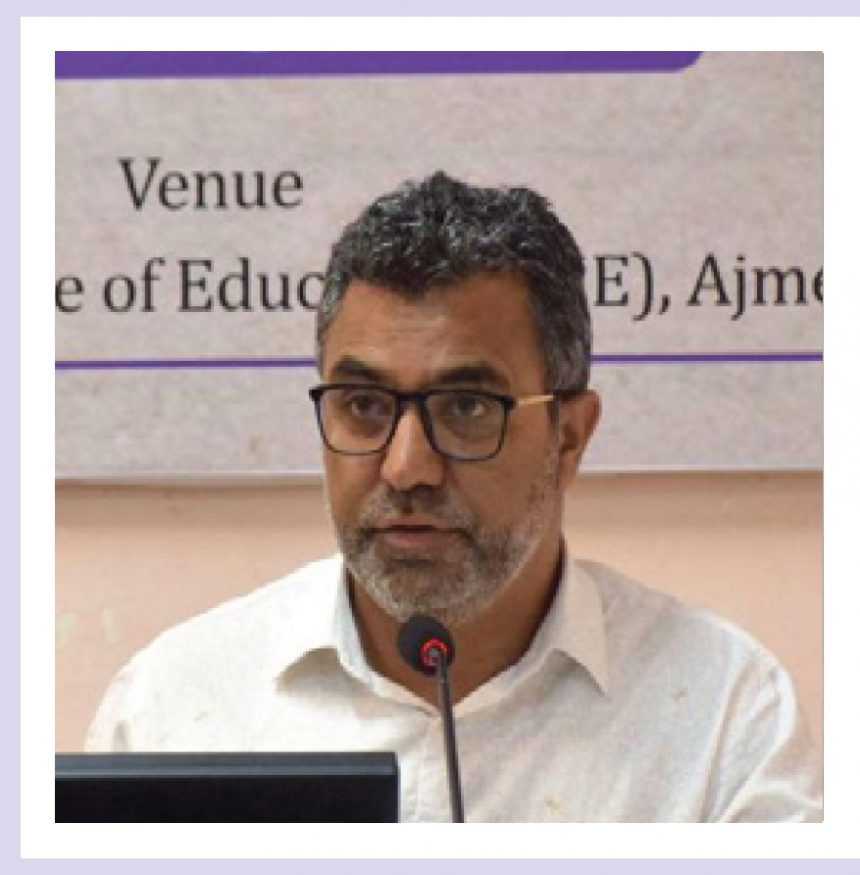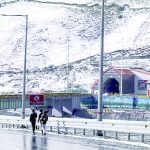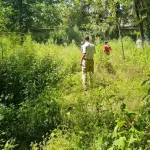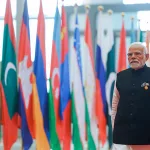In a revolutionary educational reform initiative, Jammu & Kashmir needs to relook at the medium of instruction in the different school stages. A linguistic mapping project is the need of the hour to transform the current education system, addressing the complex language needs of its 1.40 crore population(approximately). This ambitious undertaking, aligned with the National Education Policy (NEP) 2020, may transform classroom instruction through a scientifically-designed three-language formula.
“We need to initiate an unprecedented linguistic mapping exercise to identify the true mother tongue landscape of different parts of Jammu and Kashmir,” says an eminent linguist. “This systematic approach will help us understand the linguistic diversity at the grassroots level and implement targeted educational interventions.”
The comprehensive mapping project emerges at a critical juncture when traditional language patterns are experiencing significant shifts due to globalization and increased exposure to multiple languages from an early age. Education officials note that the changing dynamics of first language acquisition among younger generations necessitates a data-driven approach to language policy implementation.
Understanding the Linguistic Landscape
The linguistic mapping initiative in Jammu & Kashmir represents an unprecedented effort to understand the complex variety of language use across the regions. Through a comprehensive analysis of geographic and sociolinguistic factors, this initiative aims to create a detailed picture of how languages interact and evolve within different communities.
The geographic distribution of languages reveals fascinating patterns across urban and rural areas. In metropolitan centers like Srinagar and Jammu, language preferences often differ markedly from those in surrounding rural regions. Urban areas typically show a greater influence of English and Urdu, particularly in professional and educational settings, while rural communities maintain stronger connections to traditional local languages. This urban-rural divide is particularly evident in educational institutions, where the medium of instruction often varies based on location and community preferences.
District-wise analysis of mother tongue distribution provides crucial insights into linguistic diversity. Each district presents its unique linguistic profile, with some showing remarkable homogeneity while others display complex multilingual patterns. For instance, border districts often exhibit distinctive linguistic characteristics influenced by their proximity to neighboring regions and states. These areas frequently demonstrate language mixing and hybrid forms of communication that reflect their geographic position and historical connections.
The impact of migration on language dynamics adds another layer of complexity to the linguistic landscape. Both internal and external migration patterns have significantly influenced language use across the region. Urban centers, in particular, have experienced substantial linguistic changes due to population movement, leading to the emergence of new language contact situations and mixed linguistic practices. This migration-induced language change has important implications for educational planning and policy implementation.
The sociolinguistic dimension of the mapping initiative reveals intricate relationships between language use and social factors. The interplay between home language and community language often creates complex linguistic situations, where individuals navigate multiple language choices in different domains of life. Families might use one language at home while adapting to another in public spaces, creating a dynamic bilingual or multilingual environment that educational policies must address.
Generational language shifts represent a significant aspect of the sociolinguistic landscape. Younger generations often show different language preferences compared to their parents and grandparents, influenced by factors such as education, media exposure, and changing social aspirations. These shifts can create interesting family dynamics where multiple languages coexist across generations, each serving different functions and carrying different social meanings.
Socioeconomic factors play a crucial role in language choice and usage patterns. Access to education, employment opportunities, and social mobility often influence language preferences and acquisition patterns. Higher socioeconomic groups might show greater preference for English medium education, while other communities maintain stronger ties to regional languages. Understanding these socioeconomic dimensions is crucial for developing equitable language policies that serve all segments of society.
Cultural identity and language preference are deeply intertwined, with language often serving as a crucial marker of cultural belonging. Many communities view their traditional languages as vital repositories of cultural knowledge and heritage. This cultural dimension of language use has important implications for education policy, particularly in terms of preserving and promoting local languages while ensuring access to languages of wider communication.
Media consumption patterns and language exposure significantly influence language attitudes and usage, particularly among younger generations. The increasing accessibility of digital media has created new patterns of language exposure and acquisition. Social media, television, and online content consumption habits are reshaping traditional language boundaries and creating new forms of linguistic expression that must be considered in educational planning.
This detailed understanding of the linguistic landscape serves multiple purposes in educational reform.The insights gained from this mapping initiative will ensure that language policies are grounded in the actual linguistic practices and needs of communities rather than theoretical assumptions.
The success of this mapping initiative relies heavily on refined data collection methods and analysis. Researchers employ a combination of quantitative surveys, qualitative interviews, and ethnographic observations to capture the full complexity of language use patterns.
These insights from the linguistic mapping initiative will directly inform the implementation of the three-language formula in schools, ensuring that language education policies are responsive to local needs while promoting broader educational goals. The detailed understanding of language dynamics will help create more effective and culturally sensitive educational programs that serve the diverse linguistic needs of Jammu & Kashmir’s population.
A, Senior Academic Officer explains, “Our mapping methodology shall involve both quantitative surveys and qualitative assessments. We must not just count speakers; we have to understand language usage contexts, attitudes, and proficiency levels.”
Historical Context and Current Challenges
The linguistic history of Jammu & Kashmir reveals a rich drapery of interwoven languages, each playing distinct roles in the region’s educational and cultural development. Urdu has historically dominated the educational landscape, serving as the primary medium of instruction and administrative communication due to its deep cultural roots and historical significance. Meanwhile, Kashmiri, despite its widespread use in daily life and its status as the mother tongue for a significant portion of the population, has faced persistent challenges in gaining formal institutional support within the education system. English has steadily grown in influence, particularly in urban areas, where it has become increasingly prevalent in both private education and professional spheres. This urban-centric growth of English has created a notable divide between city and rural educational experiences. In rural areas, regional languages have maintained a strong presence, though often in an informal capacity, serving as crucial tools for community communication and cultural expression while lacking formal recognition in educational frameworks. This complex linguistic ecosystem has created both challenges and opportunities in developing comprehensive education policies that can effectively serve all communities while preserving cultural heritage.
Implementation Hurdles
“Previous language policies faced significant challenges due to insufficient understanding of ground realities,” notes a well-known Education Policy Expert. “Our new mapping initiative shall help us avoid past pitfalls and design more effective interventions.”
The Three-Language Formula: A New Approach: The revised framework, based on mapping insights, proposes:
First Language (R1)
– Mother tongue or regional language options including:
Kashmiri
Dogri
Punjabi
Sheena
Balti
– Other local languages identified through mapping
Second Language (R2)
– Choice between:
Hindi
Urdu
English
All such languages not identified as L1
– Selection based on regional preferences and practical considerations
Third Language (R3)
– Options including:
Classical languages (Sanskrit, Persian)
Modern Indian languages
Foreign languages
All such languages not identified as L2
– Flexibility based on student interest and future aspirations
Implementation Strategy
The implementation of Jammu & Kashmir’s ambitious language education reform follows a carefully structured three-phase approach, beginning with an extensive linguistic mapping exercise. This initial phase encompasses comprehensive household surveys across urban and rural areas, detailed school-level language assessments to understand current practices and proficiency levels, and in-depth community consultations to gather insights about language preferences and cultural considerations. The data collected undergoes rigorous analysis to identify patterns, challenges, and opportunities that will inform subsequent phases of implementation.
The second phase focuses on developing robust infrastructure to support the new language education framework. This includes establishing state-of-the-art language laboratories equipped with modern technology and learning tools, creating culturally relevant teaching materials that reflect local contexts and traditions, developing digital resources to support blended learning approaches, and setting up dedicated teacher training facilities under the control of District Institute of Education & Training in each District. These infrastructure developments are strategically planned to ensure equitable access across different regions of the Union Territory, with particular attention to addressing the needs of remote and underserved areas.
The final phase emphasizes capacity building and sustainable implementation through comprehensive teacher training programs designed to enhance multilingual teaching competencies at State Council of Educational research and Training (SCERT). Administrators shall undergo specialized orientation sessions to effectively manage and support the new language education system, while community awareness campaigns can help build understanding and support for the initiative among parents and local stakeholders. A robust monitoring and evaluation system in place can track implementation progress, measure outcomes, and enable continuous improvement through regular feedback and assessment. This phase is designed to be ongoing, ensuring the long-term sustainability and effectiveness of the language education reform.
Technological Integration
The language education reform initiative in Jammu & Kashmir embraces technology as a cornerstone of its implementation strategy, deploying a comprehensive suite of digital tools to enhance language learning and teaching. State-of-the-art online language learning platforms provide students with interactive, engaging content accessible from anywhere in the region. Virtual language laboratories equipped with advanced audio-visual capabilities offer immersive learning experiences, while carefully designed mobile applications enable students to practice language skills at their own pace. These digital tools are complemented by classy assessment platforms that provide real-time feedback and track student progress systematically.
The initiative’s resource development strategy focuses on creating rich, multimedia e-learning materials that cater to diverse learning styles and proficiency levels. Interactive language learning software, developed in collaboration with educational technology experts, provides personalized learning pathways for students. Virtual reality language immersion programs transport learners into realistic scenarios where they can practice language skills in contextual settings. Additionally, comprehensive online training modules support teachers in developing their pedagogical skills and adapting to new teaching methodologies.








